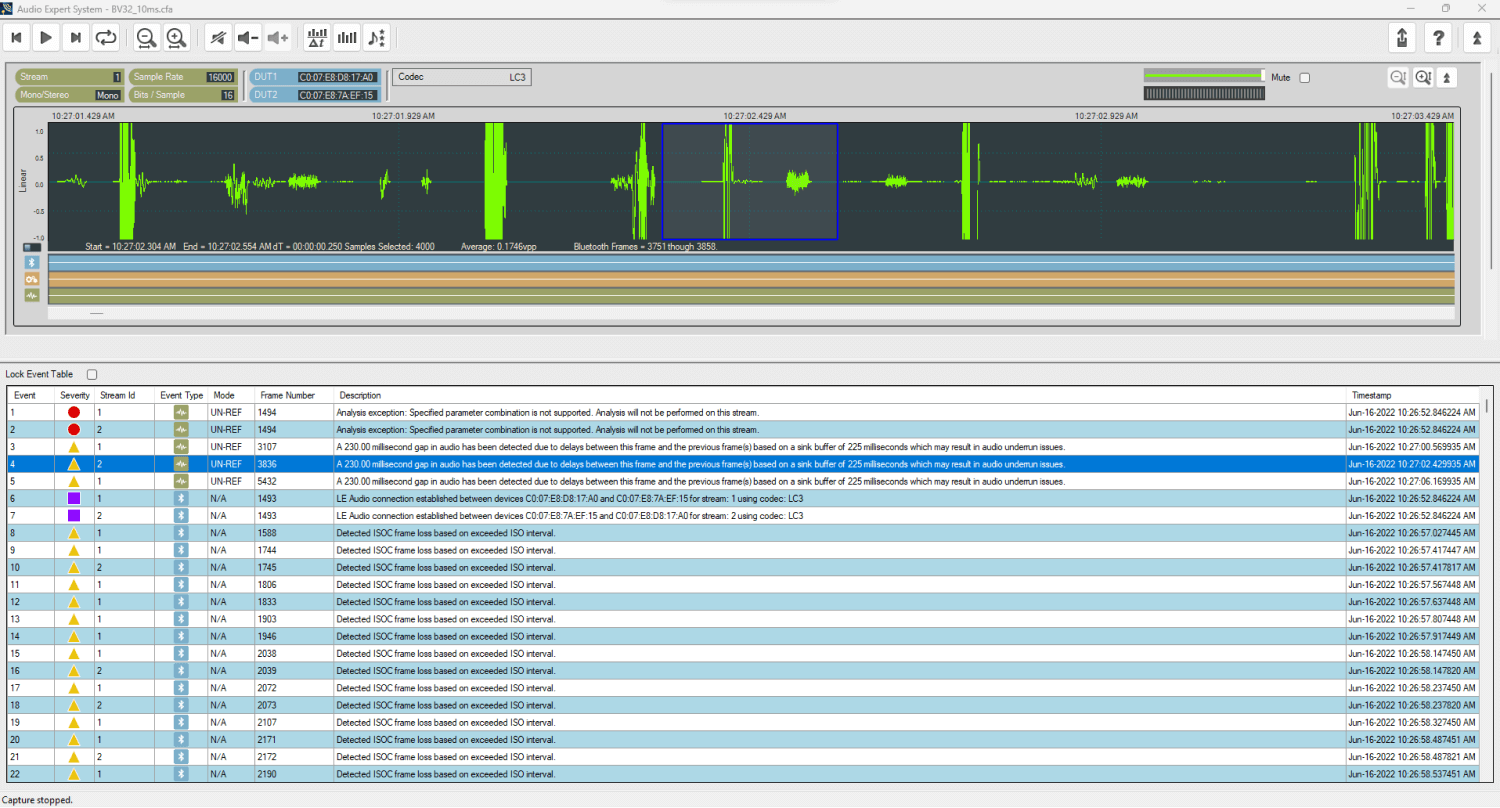Test and Validation
Test and Validation for Wireless Devices
Test and validation is a critical part of modern software development and maintenance. Cloud2GND has a long history of working in the test and validation space, particularly with Bluetooth technology.
Embedded systems often have strict performance and reliability requirements, making thorough testing and validation essential. In the case of wireless devices, proper testing and validation is necessary to ensure compliance with relevant regulations and standards, as well as to ensure reliable communication and device interoperability. Cloud2GND’s expertise in this area gives our clients confidence that their products will meet their desired specifications and performance targets.
Cloud2GND believes that testing is essential to the development of high quality and standards-conformant software. In order to achieve this standard of quality, we rely on a number of different types of testing throughout the software development process.

Types of Testing
Unit testing involves testing individual components or units of the software in isolation to ensure that they function as expected. This is typically done by the development team, and it is an important part of the software development process because it helps to identify any errors or bugs early in the development process.
Integration testing involves combining and testing multiple units or components to ensure that they work together properly. This identifies any issues that may arise when different parts of the software are combined.
System testing focuses on verifying the behavior of a system as a whole. It involves testing the system’s functionality and performance in a real-world environment, using test cases that are designed to mimic real-life scenarios, both expected and unexpected. This is particularly important for a wireless device because the device’s behavior is dependent on the behavior of the remote device.
Qualification or protocol conformance testing is a special form of system testing intended to confirm that a device behaves as expected when interacting with other devices using a selected wireless protocol such as Bluetooth. Wireless devices also have to comply with regulatory testing requirements established by government agencies or industry organizations which can vary depending on the product or system being tested and the region where the device is manufactured and sold, as well as the region where the device is used.

Bluetooth Qualification
Since 2015, our Bluetooth SIG teams have been responsible for writing most key test specifications for major Bluetooth standards. These test specifications (or test suites) define the tests that verify that a device or component complies with the Bluetooth specification.
Qualification testing involves a series of tests that are carried out on the device or product in order to certify its compliance with the Bluetooth specifications. These tests may include radio frequency (RF) performance tests, protocol conformance tests, security tests, and interoperability tests, among others. The specific tests that are required will depend on the Bluetooth version, profile(s), and features that the device or product supports.
The majority of qualification tests for Bluetooth technology are carried out using a device known as the Protocol Test Suite (PTS), which is a hardware and software platform that is designed specifically for testing Bluetooth devices. The PTS is used to emulate different Bluetooth environments and test scenarios, and is used to verify the performance and interoperability of the device being tested.
Qualification testing is an essential step in the development of a Bluetooth device or product, as it helps to ensure compatibility with other Bluetooth devices to provide a high-quality user experience.
Cloud2GND has consulted with major test equipment suppliers and assisted in the development and validation of critical test systems related to Bluetooth controller qualification. We also offer Bluetooth qualification services, and have assisted our clients and partners in performing complex qualifications on Bluetooth solutions, protocol stacks, and products.


Test Automation
As the complexity of software increases, so does the challenge of performing comprehensive testing as the software undergoes changes, fixes, and enhancements over time.
Test automation is the use of software tools and techniques to test an embedded system while minimizing the number of manual steps. This improves the efficiency and effectiveness of the testing process, as it allows for the rapid execution of tests and the automation of repetitive tasks.
Test automation for embedded systems typically involves the use of specialized software tools designed to automate the testing process. These tools may include hardware-in-the-loop (HIL) simulators, which allow for the emulation of hardware components, as well as test runners and test harnesses, which are used to execute, manage, and track the results of tests.
One of the key advantages of test automation for embedded systems is the rapid execution of tests, which can help to reduce the time and cost of the testing process. Additionally, test automation can help to ensure the consistency and reliability of the testing process, as tests can be run repeatedly and accurately.
Our teams have written test scripts and test automation systems used by major semiconductor and stack vendors. We have the know-how to tackle the unique challenges of testing wireless devices, and we have automated complete test suites such as the Bluetooth SIG PTS test system to allow automatic regression testing of Bluetooth stacks and profiles suites.
Our Impact
What Clients Say About Us
“Cloud2GND brings a depth of Bluetooth protocol expertise that’s incredibly hard to find, especially in areas like LE Audio and low-level stack development. Their contributions have been key to the evolution of our stacks over the years.”


Jason Hillyard, Director of Bluetooth
Product and Technology, Synaptics
“Cloud2GND dramatically advanced our Bluetooth-based medical devices, from hardware design through iterative software development. Their ability to navigate product strategy, technical detail, and FDA requirements makes them a true development partner–not just a service provider.”


Andrew Holtman, CEO
Dandelion Medical Devices
Let’s Get Connected
Cloud2GND can make your next Bluetooth project successful. Contact us today to learn how.